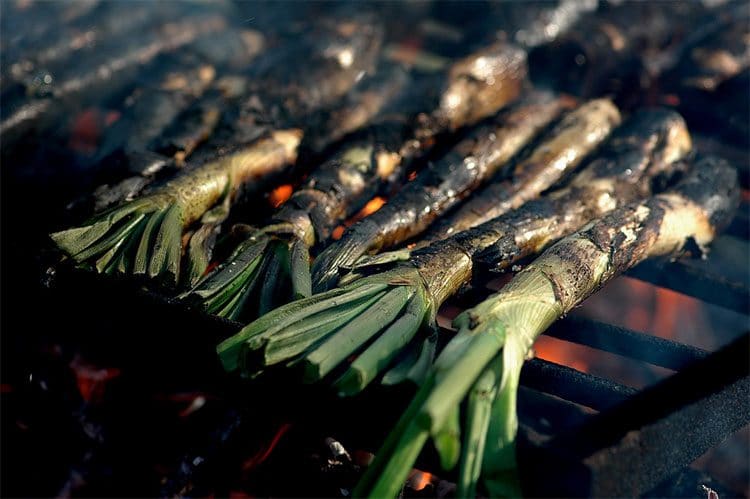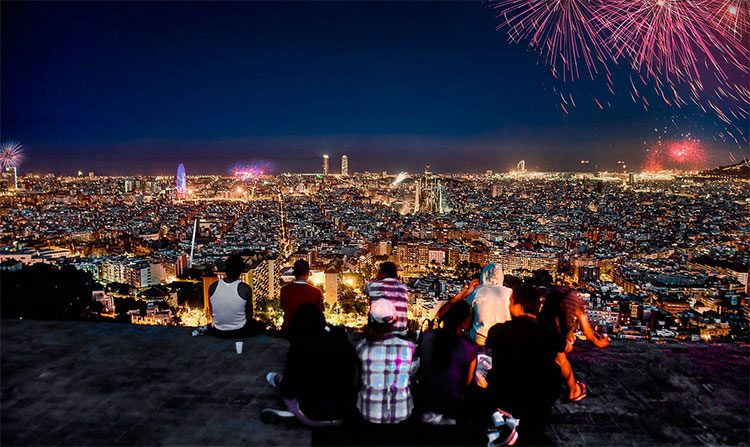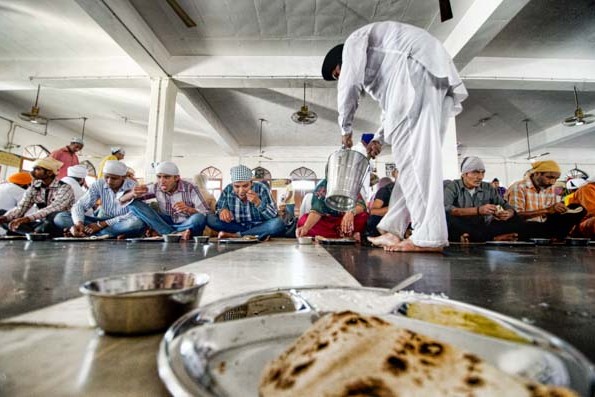GUEST POST OVERVIEW: When I was 14, I spent a summer in Spain. I didn’t make it to Barcelona. In the years since, I have traveled through much of Central and South America and other Spanish-speaking countries.
But, I still want to go to Barcelona. In this new post by my friend Emma, you can get an idea of one of the biggest reasons why: the yummy food!

. . .
Yes, Barcelona’s gastronomy is one of its strongest points and aside from all the ‘must-eats’ that are on your list for your trip to the Catalan capital, here are some seasonal products that you can only eat during certain times of the year.
When asked to name some essentials of Spanish and Catalan cuisine, the usual dishes come up: paella, pa amb tomàquet, Spanish tortilla, patatas bravas, Spanish ham… However, you can eat all of them all year round, no matter when you visit.
However, there are some delicious eats that you cannot enjoy twelve months a year but rather only during a reduced period. Here is what you cannot miss and for all tastes, sweet and savory.

. . .
Spring
You can try them before but there’s nothing better than a nice calçotada in Barcelona or anywhere in the Catalan countryside. What is this term? The calçot is a type of scallion or green onion that is grilled on both sides over a fire until they are chargrilled.
To eat them, it’s traditional (and almost mandatory) to wear a bib in case you make a mess of yourself. How? Because you have to peel the calçot‘s until you get to the tender white interior and dip it in romescu sauce, a nut and red-pepper based sauce traditional from the south of Catalonia.
Usually, Catalans accompany the calçots with grilled red meat and excellent wine in the outdoors and in the countryside, bringing their own food. However, there are many restaurants that serve them so you shouldn’t find it hard to come across one during your stay in Barcelona.
A must, if there ever was one.

. . .
Summer
The summer solstice is known in Catalonia as Sant Joan, or Saint John, the longest day of the year and the shortest night, commemorated with massive bonfires being made on the beach or in mains squares in the towns.
Drinking, partying and plenty of pyrotechnics accompany the night of Sant Joan but there’s also an element that can never be missed: the famous Coca de Sant Joan.
The coca is a flat cake that can have custard, powder sugar and candied fruit. One for those with a sweet tooth.

. . .
Autumn
The party of the Castanyada is a traditional Catalan festival that is celebrated on the week of All Saints Day, in late October.
It’s traditional for the streets to be filled with little stalls that roast chestnuts and sweet potatoes and sell the former in newspaper-made cones for a pittance, and the smell floods the cities and towns.
However, if you don’t like chestnuts you’re still going to enjoy this festival.
Alongside the castanyes it is traditional to eat panellets, small cakes that usually are made out of marzipan and that include pine nuts.
You can find assortments of them in cake shops and bakeries all over the city.

. . .
Winter
Okay, so you can probably make this any time of the year but in winter is when it’s the most popular and goes down the best.
Contrary to popular belief, it can get quite cold in Barcelona in winters and there’s no better way of fighting it than with a nice bowl of escudella with carn d’olla.
Escudella is a traditional Catalan soup that is made from vegetables and meat bones, which are cooked over a long period of time on a low fire which can be served with pasta shells or rice.
After it is served, the carn d’olla comes into play, as the meat that was used to cook the broth is served on a tray apart.
EXPLORE SOMEWHERE NEW
BUY A PRINT
All photos on this site are available as limited edition fine art photographic prints. Please get in touch for sizes and rates.


